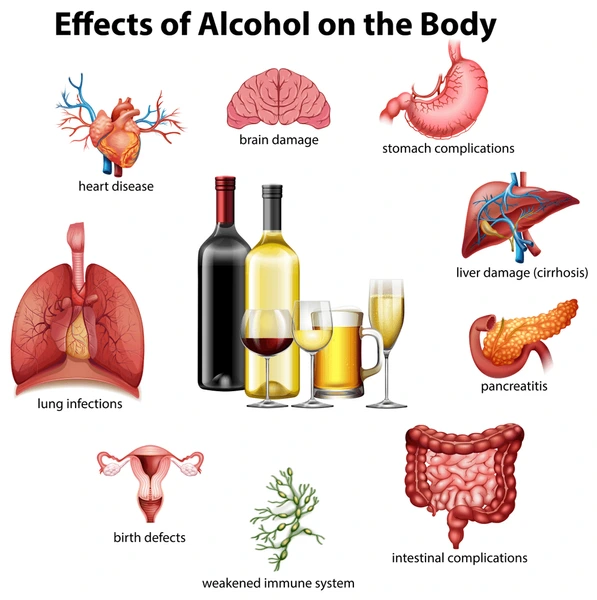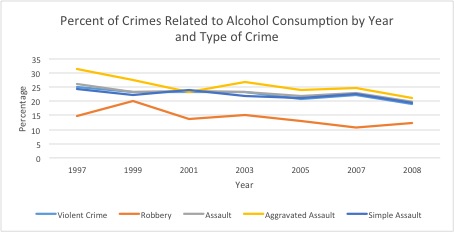The Harsh Reality of Alcohol Consumption
Alcohol, a psychoactive substance enjoyed worldwide, carries a dark side that often goes unrecognized. The World Health Organization (WHO) has classified alcohol as a major contributor to death, disability, and societal issues, with over 3 million deaths annually attributed to its use. Alarmingly, it accounts for 5.1% of the global burden of disease. The WHO’s latest statement is unequivocal: there is no safe level of alcohol consumption—even a single drop can have serious health consequences.
What Is a Standard Drink?

The definition of a standard drink varies by country, but it generally contains around 10-14 grams of pure alcohol. For example:
- USA: 14 grams (e.g., 12 oz. beer, 5 oz. wine)
- UK: 8 grams (e.g., 250 ml beer, 25 ml spirits)
- Australia: 10 grams (e.g., 375 ml beer, 100 ml wine)
Understanding this is crucial as many people underestimate their consumption by not recognizing the amount of pure alcohol they are ingesting.
Alcohol Consumption: A Continuum of Risk
Low Risk
Consuming up to 2 standard drinks per week is generally considered to pose minimal risk of harm. However, it’s important to note that “minimal risk” does not mean “no risk.” Even at this level, certain individuals, such as those with pre-existing health conditions, may still experience negative effects. This category often reflects the most conservative guidelines, emphasizing that lower consumption is better for long-term health.
Moderate Risk
Drinking 3-6 standard drinks per week is classified as moderate risk. At this level, the risk of developing health issues such as hypertension, liver disease, and certain cancers begins to increase. The moderate-risk category is where we start seeing more noticeable impacts on health, particularly with consistent drinking habits. It’s crucial to understand that these risks are cumulative, meaning the more frequently one consumes alcohol, the greater the potential harm.
High Risk
Consuming 7 or more standard drinks per week is considered high risk, significantly increasing the likelihood of severe health consequences, including addiction, liver cirrhosis, cardiovascular diseases, and various types of cancer. The high-risk category is where the dangers of alcohol are most apparent, with a marked increase in the likelihood of experiencing life-threatening conditions.
Binge Drinking and Acute Risks
It’s also important to emphasize that risk increases sharply when consuming more than 2 drinks in a single occasion, regardless of the total weekly intake. This is particularly relevant in the context of binge drinking, which can lead to acute consequences such as alcohol poisoning, accidents, and violence, as well as contribute to long-term health problems.
The Science Behind Moderate Alcohol Use
Past studies that suggested benefits from moderate drinking were often flawed. These studies failed to control for confounding factors such as genetics, diet, exercise, and smoking. Moreover, the misclassification of lifelong abstainers with former drinkers who quit due to health issues likely skewed the results. Current research highlights that even moderate alcohol use raises the risk of chronic diseases, including cancer and cardiovascular disease.
Alcohol-Related Health Risks: A Closer Look

- Cancer: Alcohol is a Group 1 carcinogen, the highest classification by the WHO, indicating it is known to cause cancer in humans. This includes cancers of the mouth, throat, esophagus, liver, and breast.
- Cardiovascular Diseases: While some earlier studies suggested that light drinking could benefit heart health, the reality is that alcohol increases the risk of hypertension, cardiomyopathy, arrhythmias, and coronary artery disease.
- Liver Disease: Alcohol is the leading cause of liver cirrhosis worldwide. Even moderate consumption can lead to alcoholic fatty liver disease, progressing to alcoholic hepatitis and eventually cirrhosis.
Social and Economic Impacts: The Cost of Alcohol
The repercussions of alcohol consumption extend beyond individual health:
- Violence and Crime: Alcohol is closely linked to violent behavior and crime. A recent report from The Guardianhighlighted a significant rise in domestic violence cases during the COVID-19 lockdowns, with alcohol being a major contributing factor. According to the report, alcohol was involved in nearly 40% of all violent crimes in the UK.

- Economic Burden: The global economic cost of alcohol-related harm is staggering, running into billions of dollars annually. This includes healthcare costs, lost productivity, and the social costs of alcohol-related violence and accidents. In the United States alone, the total cost of alcohol misuse is estimated to be around $249 billion annually.

Practical Tips for Responsible Drinking
While the ultimate goal is to reduce alcohol consumption to zero, a gradual approach is often more practical for those struggling with alcohol dependence:
- Awareness: Keep your table full of non-alcoholic options and use a new glass for each drink to monitor your intake.
- Plan Ahead: Limit the availability of alcohol at social gatherings and choose dry red or white wine over stronger spirits. Avoid cocktails and mixing alcohol with sugary or carbonated drinks.
- Healthier Choices: Pair alcohol with healthy, protein-rich snacks like grilled chicken or tofu and avoid fried foods. Drink water before, during, and after alcohol consumption to stay hydrated and slow down your drinking pace.
- Pace Yourself: Dilute your drinks with ice and sip slowly. Be mindful of mixing alcohol with medications, and engage in conversations to naturally slow down your drinking.
The Rise of Non-Alcoholic Beverages
For those looking to cut down or eliminate alcohol, non-alcoholic beverages offer a great alternative. Brands like Ritual Zero Proof, hiyo, Ghia, and Athletic Brewing are leading the charge in creating alcohol-free options that don’t compromise on taste. In India, options like Heineken 0.0 and Kingfisher Radler are gaining popularity, while in Singapore, Lyre’s Non-Alcoholic Spirits and Seedlip offer premium choices. In Dubai, Boreal Botanical Brew and SipCo are popular, and in Vietnam, Sober Company and Vikings Thunder non-alcoholic beers are on the rise.
Global Policy Recommendations: Detailed Strategies for Reducing Alcohol-Related Harm
1. Advertising Restrictions
Objective: Limit alcohol marketing, especially targeting vulnerable groups such as children and teenagers.
Strategies:
- Ban Alcohol Advertising on Youth Platforms: Implement strict regulations to prevent alcohol advertising on television channels, websites, and social media platforms that are popular with younger audiences. For example, the UK’s Advertising Standards Authority (ASA) has successfully banned alcohol ads on platforms where more than 25% of the audience is underage.
- Restrict Sponsorships: Prohibit alcohol brands from sponsoring events, sports teams, and youth-related activities. The European Union has imposed restrictions on alcohol sponsorship of sports events to reduce its visibility among young people.
- Implement Comprehensive Labeling Requirements: Require that alcohol advertisements clearly state health risks and consumption limits. This could include warnings about the dangers of drinking during pregnancy or the increased risk of cancer, similar to the warning labels mandated for tobacco products.
2. Alcohol Pricing
Objective: Increase taxes on alcohol to reduce consumption and discourage excessive drinking.
Strategies:
- Raise Excise Taxes: Implement higher taxes on alcohol, especially on high-alcohol-content products. For instance, Scotland introduced a minimum unit price for alcohol in 2018, which has led to a significant decrease in alcohol consumption and related harms.
- Introduce Pricing Floors: Set minimum prices per unit of alcohol to prevent cheap, high-alcohol products from being readily available. The Australian government has proposed minimum pricing policies to combat excessive drinking.
- Increase Alcohol Duty: Regularly adjust alcohol duties to keep pace with inflation and rising living costs. The Irish government has increased taxes on alcohol products to address the public health impact of excessive drinking.
3. Public Education
Objective: Raise awareness about the risks associated with alcohol consumption to inform and educate the public.
Strategies:
- National Campaigns: Launch nationwide educational campaigns about the dangers of excessive alcohol consumption, similar to the “Drinkaware” campaigns in the UK, which use advertisements, educational materials, and online resources to raise awareness.
- School Programs: Integrate alcohol education into school curriculums to educate children and teenagers about the health risks associated with alcohol use. The US Centers for Disease Control and Prevention (CDC) supports various educational programs in schools aimed at preventing underage drinking.
- Community Outreach: Partner with local communities and healthcare providers to organize workshops, seminars, and support groups focusing on the impact of alcohol. Public health initiatives like Alcohol Awareness Month offer opportunities for community engagement and education.
4. Labeling
Objective: Implement clear and informative labels on alcoholic beverages to provide consumers with critical information about their contents and health risks.
Strategies:
- Standardized Warning Labels: Require alcohol products to carry standardized warning labels that highlight health risks, such as those related to cancer and liver disease. Canada mandates warning labels on alcoholic beverages that include health advisories and a recommended drinking limit.
- Standard Drink Information: Ensure that labels include information on the number of standard drinks per container, similar to Australia’s approach, where labels provide clear information about alcohol content and serving sizes.
- Health Risk Information: Include specific health risk information on labels, such as the effects of drinking during pregnancy and interactions with medications. The US Alcohol and Tobacco Tax and Trade Bureau (TTB) has proposed more detailed health warnings on alcohol labels to improve consumer awareness.
By implementing these detailed strategies, we can work towards minimizing alcohol-related harm and promoting healthier choices within communities.
Conclusion: The Path Forward
In conclusion, the evidence is clear: there is no safe level of alcohol consumption. The risk to health begins with the first drop, and the potential for harm increases with each additional drink. As dietitians at Foodnwellness, we are committed to helping individuals navigate their journey toward reduced alcohol consumption. We provide personalized support, practical tips, and alternative options to make this journey as seamless as possible. Whether through gradual reduction or the introduction of non-alcoholic beverages, we are here to help our clients achieve a healthier, alcohol-free lifestyle.



